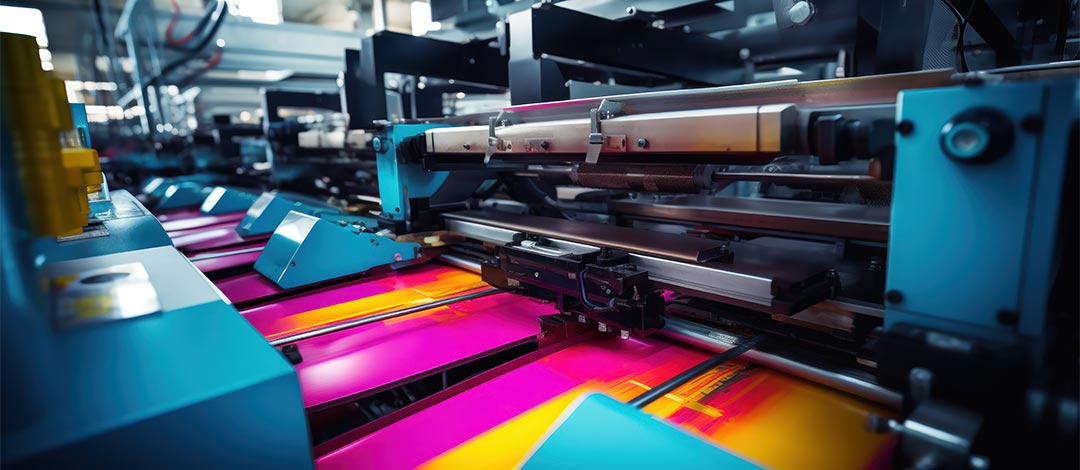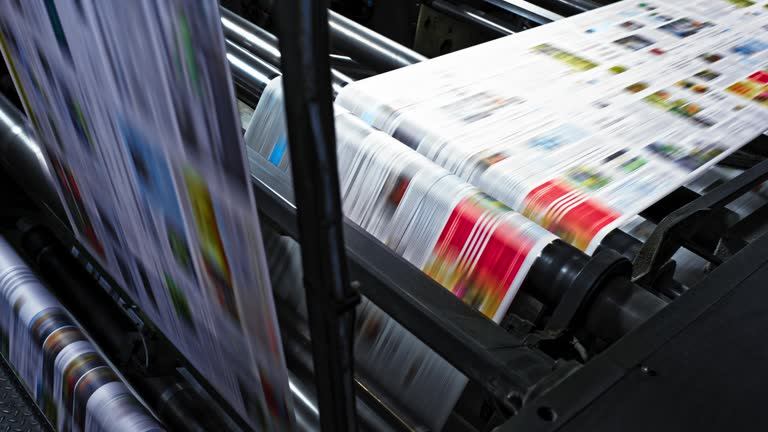Offset printing for religious materials is an essential service for many communities around the world. This method of printing has become the cornerstone for producing high-quality religious texts and materials that are distributed widely and cherished by millions. From Bibles to prayer books, the reliability and efficiency of offset printing make it an ideal choice for religious institutions. In this article, we will explore the nuances of offset printing for religious materials, its benefits, and why it remains a preferred method in the printing industry.

What is Offset Printing?
Offset printing is a printing technique where an inked image is transferred from a plate to a rubber blanket, then to the printing surface. This method is widely used for mass-production printing because of its consistent high quality and cost-effectiveness, especially for larger print runs. The technique is known for its accuracy and ability to produce sharp, clean images and text, making it perfect for religious materials that require precision and clarity.
Importance of Religious Materials
Religious materials play a crucial role in the spiritual lives of individuals and communities. They are not only tools for worship but also convey teachings, traditions, and cultural heritage. The quality of these materials can influence how they are perceived and used. This is where offset printing shines, offering a level of quality that respects and preserves the sanctity of religious texts.
Key Benefits of Offset Printing for Religious Materials
High-Quality Output
One of the significant advantages of offset printing is its ability to produce high-quality prints. This is particularly important for religious materials, which often contain intricate designs and require clear, legible text. The precision and detail achievable with offset printing ensure that every page is a faithful representation of the original manuscript.
Cost-Effectiveness
For large print runs, offset printing is more cost-effective than other printing methods. This is because the initial setup costs are spread over a larger number of copies, reducing the cost per unit. For religious institutions that need to distribute materials widely, this cost-effectiveness is a significant advantage.
Versatility
Offset printing is versatile and can be used on various paper types and weights, allowing for a diverse range of religious materials to be produced. Whether it’s a compact prayer booklet or a large, detailed Bible, offset printing can accommodate the specific needs of each project.
Applications of Offset Printing in Religious Materials
Bibles and Sacred Texts
The most common application of offset printing in religious materials is the production of Bibles and other sacred texts. These texts require high precision and durability, characteristics that offset printing can provide. The method ensures that the texts are not only readable but also long-lasting.
Prayer Books and Hymnals
Prayer books and hymnals are essential religious materials that benefit from the high-quality output of offset printing. The sharpness and clarity of the print enhance the user experience, making it easier for congregants to follow along during services.
Religious Educational Materials
Religious educational materials, such as catechisms and study guides, are another area where offset printing is invaluable. These materials require clear and precise printing to effectively convey information, and offset printing’s high-quality output ensures that the educational content is delivered accurately.
Comparing Offset Printing with Digital Printing
While offset printing is a preferred choice for many religious materials, it’s essential to understand how it compares to digital printing. Digital printing offers flexibility and is suitable for smaller print runs, but it often falls short in terms of quality and cost-effectiveness for larger volumes compared to offset printing.
Quality and Cost Differences
The primary difference between the two methods lies in quality and cost. Offset printing typically offers superior quality and is more cost-effective for large print runs. In contrast, digital printing is more suited for short runs and projects requiring quick turnaround times.
Environmental Considerations
Environmental sustainability is a growing concern in the printing industry. Offset printing has made significant strides in this area, with advancements in eco-friendly inks and recycling processes. Many printing companies now offer sustainable options for producing religious materials, ensuring that their production practices are aligned with environmental values.
Choosing the Right Printing Partner
When selecting a printing partner for religious materials, it’s crucial to choose a company with experience and expertise in offset printing. Look for a partner that understands the specific needs of religious texts and has a track record of producing high-quality work. Consider checking out Offset Printing for Educational Publishing to learn more about their offerings.
Key Questions to Ask
Before committing to a printing partner, ask questions about their printing processes, quality assurance measures, and sustainability practices. Ensuring that they can meet your specific needs will help guarantee a successful project.
Future of Offset Printing in Religious Materials
The future of offset printing in religious materials looks promising, with ongoing technological advancements and a continued demand for high-quality printed products. As religious communities continue to value and rely on printed materials, offset printing will remain a vital part of the industry.
Conclusion
Offset printing for religious materials is an essential service that supports the spiritual and cultural needs of communities worldwide. Its ability to produce high-quality, cost-effective, and versatile printed materials ensures that religious texts are preserved and disseminated with the respect they deserve. As technology evolves, offset printing will continue to adapt and meet the needs of religious institutions around the globe.

FAQs
What are the main benefits of offset printing for religious materials?
The main benefits include high-quality output, cost-effectiveness for large print runs, and versatility in printing different types of materials.
Why is offset printing preferred over digital printing for religious texts?
Offset printing is preferred for its superior quality and cost-effectiveness in large volumes, which are often required for religious materials.
How does offset printing contribute to environmental sustainability?
Offset printing has incorporated eco-friendly inks and recycling processes, making it a more sustainable option for producing printed materials.
This article contains affiliate links. We may earn a commission at no extra cost to you.







